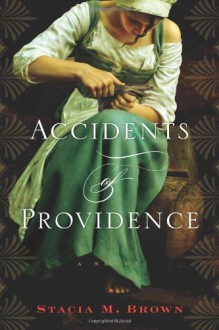

Good historical thriller, which fitted in well to what I believe I know about 17th Century 'British Isles'. The plot had many stock historical themes from the Civil War and Protectorate periods. That isn't a criticism, as historical fiction without strong anchors in well studied events is very difficult to buy into.
The book is well enough written, conveying all the hardships and customary behaviours associated with those torturous times without every straying far into harsh graphic detail. This creates a book for a very wide readership. We are given the colours and outlines, being left free to paint the stronger images for ourselves. That doesn't mean the story lacks bite, far from it.
The characters are drawn with a depth of individual and understandable emotions and prejudices, especially in the light of the historic backdrop. As one living much of my life in one of the last country houses to hold to the King, in one of the strongest Royalist areas in the Civil War, I have always had an interest in that history. I read nothing that grated against my preconceptions. I wish I had written this plot.
Of interest to me is the strong connection this book has with so much that is currently happening as a result of interactions between prejudiced religious beliefs and cultural intolerances. I don't know if any of this was in Allen's mind as he wrote, but it was certainly in the mind of this reader.
To summarise: a good plot, with familiar historic anchors from an exciting period, written well.

This is the story of what happened to the men who signed the death warrant of Charles I, who were known as the Regicides.
About a quarter of them died between the time of that execution in 1649 and the restoration of Charles II in 1660. Some died of natural causes, like Oliver Cromwell, while others were hunted down by royalists in hiding.
Charles II promised clemency for most - if they turned themselves in. Ten men who did so were then convicted of treason by a rigged court process, hanged, drawn (had their genitals cut off while still alive), and quartered (cut into quarters). George Downing (yes, the "Downing" of "Downing Street") betrayed three that he discovered in the Netherlands, who met the same fate - he wanted to get in the king's good graces. (Pepys talks in his diary about Downing, little of it positive.) Prominent dead regicides, like Oliver Cromwell, were disinterred to be beheaded.
The others, less trusting or just luckier, fled abroad. The safest havens proved to be in Switzerland, and in Puritan New England. I was particularly interested in that section - one of my ancestors hid two of the regicides, veteran generals of the New Model Army, in a cave on his property. (These ancestors left Boston for the New Haven Colony, as they found the Massachusetts Bay Colony was insufficiently godly for them. They were hardcore Puritans.)
This history is pretty much all "this is what happened," and very light indeed on analysis. However, if you just want to know the story of what happened, both to Charles I and to his regicides, it's all here.
My ARC courtesy of Bloomsbury USA/NetGalley - much thanks!
This is the second book of Kathleen Kent's that I've read, and I'm definitely a fan. This I guess is a prequel to
A good related read for this would be

Solid 4 stars. One thing I really loved about this book, and well-done historical fiction in general, is that I can learn about history in such an enjoyable way. Granted, the subject matter isn't all rainbows and daisies, but I really enjoyed learning about what life was like for the every day woman in this time period. Although I enjoyed all of the information in this book, it was actually very disturbing too. I was struck by how much the legal system has evolved, as well as the tremendous weight that women (as well as many other groups of people) have historically had to endure.